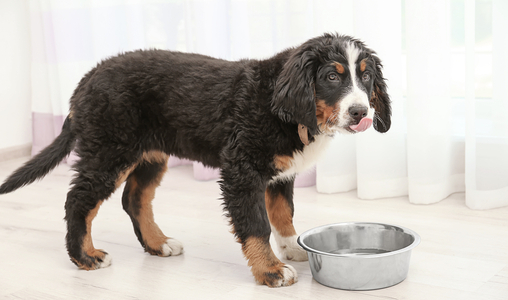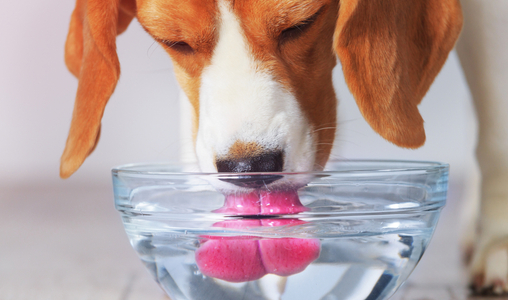
Dogs should drink about 100 cc of water for every kilogram of body weight per day. For example, a dog weighing ten kilograms should drink a liter every day. Of course, we will not measure a water dog as we would like to do with food, but will always allow him to drink as much fresh and cool water as he wants, all the time. The amount of water the dog drinks depends on several factors :

1. Temperature – Although dogs do not sweat, in the summer they cool themselves with moisture (rhythmic and fast breathing with the tongue out). In this action they evaporate water and create a cooling action. Therefore on hot days the water consumption increases.
2. Exercise – Dogs also moisturize during and after exercise, so active dogs consume more water.
3. Food – dry food has about 10% water and canned about 80% water. The amount of water that dogs drink also depends on the amount of water in their food. Dogs that eat dry food will drink much more water.
4. Health condition – There are certain disease states, especially diabetes and urinary tract diseases, which cause dogs to urinate a lot and drink a lot. The medical term for this condition is polyuria and polydipsia. If your dog’s water intake drops abruptly or increases abruptly, take him to a veterinary clinic for examination.
5. Finally, there are differences between dogs for incomprehensible reasons. If your dog is healthy, he will drink alone as much as he needs, as long as he has water. Another dog in the same condition may drink a different amount.
It is very important to allow dogs free access to clean and cool water at all times. If the dog does not have access to water he may become dehydrated, a life-threatening condition. In any case of fear of dehydration, try to encourage the dog to drink and rush him without delay to a veterinary clinic which is prepared to accept emergencies. Do not try to force the dog to drink and do not “inject” water into his mouth by force because the water may enter the respiratory system. Signs of dehydration include, exhaustion, loss of appetite, sunken eyes and lack of skin elasticity (if you hold the dog’s skin in the back area and lift the skin, when leaving the skin should return to the place. In dehydrated dogs, the skin will often stay longer in the state you left it in).

1. Care for the dog in a container with fresh water at all times. It is important that the tool be in a shady place. On hot days the water should be changed frequently. The dog should have more than one water source in case one vessel spills or is damaged.
2. When taking a dog for a walk, take care of the water. Take about twice as much water as you think the dog should drink. Do not forget clean drinking water vessels. Folding water plates are available at pet stores.
3. Maintain a drinking regime especially when taking a dog to the sea. A dog that is too thirsty may drink seawater. If a dog swallows some salt water it is not terrible, but a larger amount can be very dangerous for him.
In conclusion, water is an essential part of the basic needs of dogs and lack of access to fresh water can be life threatening.